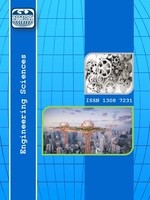CAPILLARITY OF CONCRETE INCORPORATING FOUNDRY SAND AS REPLACEMENT OF SAND
Foundry Sands, CAPYLLARY WATER ABSORPTYON, Durability, Water Absorption, WASTE,
CAPILLARITY OF CONCRETE INCORPORATING FOUNDRY SAND AS REPLACEMENT OF SAND
Foundry Sands, CAPYLLARY WATER ABSORPTYON, Durability, Water Absorption, WASTE, ,
- Başlangıç: 2009
- Yayıncı: E-Journal of New World Sciences Academy
Oğuzhan KELEŞTEMUR, Servet YILDIZ
CAPILLARITY OF CONCRETE INCORPORATING FOUNDRY SAND AS REPLACEMENT OF SAND
Jamal M. Khatib, B A HERKI, Seyhan Fırat, B Menadi, S KENAİ
Mustafa YILDIZ, Rıfat SEZER, OSMAN EKİNCİ, Emine Yıldız
TOPLU KONUTLARDA SON KULLANICI MEMNUNİYETİNİN DEĞERLENDİRİLMESİ: SAKARYA İLİ ÖRNEĞİ
Esra Eken DOBRUCALI, İsmail Hakkı DEMİR, Muhammet Zeki ÖZYURT
ATIK MERMER TOZU VE CAM LYF KATKILI BETONLARIN BASINÇ DAYANIMLARININ YAPAY SYNYR A?LARI YLE TAHMYNY
Oğuzhan KELEŞTEMUR, Servet YILDIZ
Experimental investigation of welded T-End
YNCE PLAKLARIN BURKULMASINDA GEOMETRYK KUSURLARIN ETKYSY
GÖÇEBELYKTEN YERLE?YK HAYATA GEÇY?TE, BERYTAN A?YRETY KONUTLARININDA AYDYYET DUYGUSU
EXTERNAL CHEMICAL SHRINKAGE OF PASTES CONTAINING FLUE GAS DESULPHURISATION (FGD) WASTE
